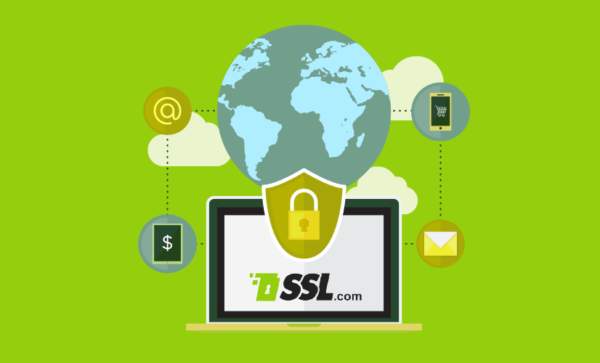
This guide provides an in-depth overview of SSL/TLS (Secure Sockets Layer and Transport Layer Security) – cryptographic protocols enabling secure internet communication. We will explain how SSL and TLS encrypt data and protect authenticated internet connections and browsing.
What is SSL/TLS?
SSL/TLS uses to establish an encrypted link between a server and a client. This allows sensitive information like credit card details to be transmitted securely over the internet.
The certificate contains a public key that authenticates the website’s identity and allows for encrypted data transfer through asymmetric, or public-key, cryptography. The matching private key is kept secret on the server.
How Does SSL/TLS Work?
SSL/TLS certificates authenticate identities and enable encrypted connections through the :
-
The client requests access to a protected resource such as a login page.
-
The server responds by sending its SSL certificate, including the public key.
-
The client verifies that the certificate is valid and trusted. This ensures the server is authentic.
-
The client generates a symmetric session key and encrypts it with the server’s public key. This securely transmits the session key to the server.
-
The server decrypts the session key with its private key.
-
Both parties use the symmetric session key to encrypt and decrypt all transmitted data.
This handshake allows the two parties to negotiate an encrypted channel without sharing sensitive information over insecure channels. The encrypted session protects data in transit between the client and server.
SSL/TLS Encryption and Keys
There are two types of encryption keys used in SSL/TLS:
-
– The public and private key pair are used to identify the server and initiate the encrypted session. The private key is known only to the server, while the public key is shared via a certificate.
-
Symmetric session keys – Disposable keys are generated for each connection and used to encrypt/decrypt transmitted data. The symmetric keys are securely exchanged using asymmetric encryption.
SSL/TLS supports multiple symmetric ciphers and asymmetric public key algorithms. For example, AES with 128-bit keys is a common symmetric cipher, while RSA and ECC commonly use asymmetric algorithms.
For a detailed comparison of the two most widely used digital signature algorithms, please read our article .
Secure your website and boost user trust. Don’t wait for threats. Explore our comprehensive SSL/TLS Certificate options today and ensure your online safety.
Secure Web Browsing with HTTPS
The most common use case of SSL/TLS is , which secures web traffic. Sites enabled with HTTPS use SSL/TLS to authenticate and encrypt all traffic between the browser and server.
To verify a website has a valid SSL certificate, look for these indicators in your browser:
-
Padlock icon – Indicates the connection is secure and authenticated. It may be accompanied by the company name.
-
https:// – The S after http indicates encryption is in use.
Without HTTPS, data is transmitted unencrypted and vulnerable to interception and tampering by . HTTPS ensures site authenticity and privacy.
Obtaining an SSL/TLS Certificate
To enable HTTPS on your website, you must obtain an SSL/TLS certificate from a trusted certificate authority (CA) like . The general process is as follows:
-
Generate a certificate signing request (CSR) on your server. This contains your public key and domain details.
-
Submit the CSR to the CA to verify your identity and issue a trusted certificate.
-
Install the issued certificate on your web server to implement HTTPS.
You can choose certificate levels for domain validation only or extended validation for maximum credibility. Keep your certificates up to date and use the latest TLS 1.3 protocol for optimal security.
Summary
SSL/TLS and HTTPS provide essential security for internet communications. Certificates bind identities while SSL/TLS handshakes negotiate encrypted sessions. Look for the padlock and HTTPS in your browser and get an SSL/TLS certificate from a reputable CA like SSL.com to protect your website.
< p class=”md-end-block md-p”>